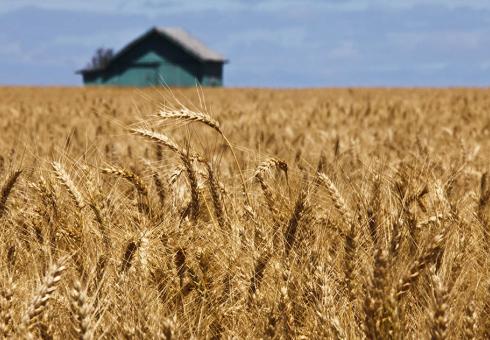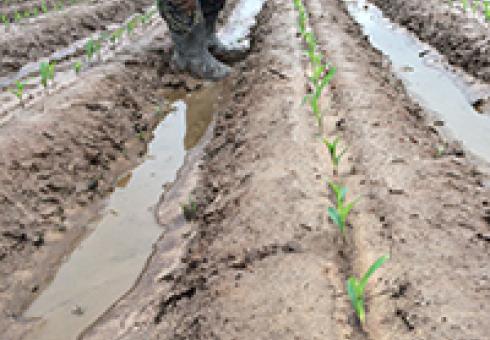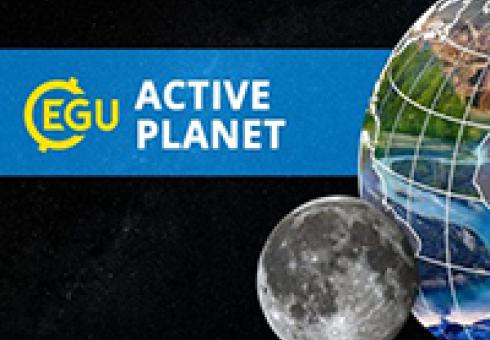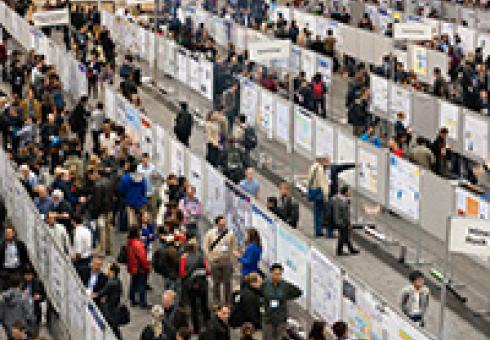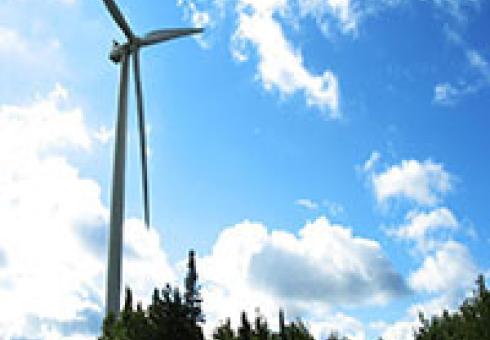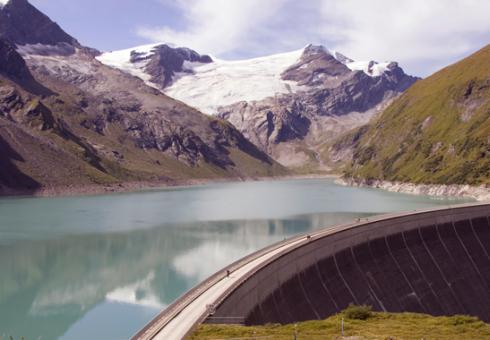MIT Joint Program Principal Research Scientist Erwan Monier comments
News and Outreach: Erwan Monier
New technique predicts frequency of heavy precipitation with global warming
New approach tracks key factors affecting crop yields, enabling early adaptation
Although the Paris agreement scheduled to be signed 22 April aims for a 2°C warming cap, new findings show that even a 1.5°C rise will hit glaciers hard.
To mark Earth Day, leaders from more than 165 countries are expected to gather at the United Nations tomorrow for a ceremony to sign the Paris climate agreement, reached last December. Under the historic deal, each country has set targets to reduce greenhouse gas emissions, with the ultimate goal to keep the rise in global temperatures below 2°C above the preindustrial average.
However, new research suggests that the emissions caps might not be low enough to prevent damaging impacts for parts of the world that are vulnerable to climate change. A study presented today at the 2016 European Geosciences Union (EGU) meeting in Vienna, Austria, shows big differences between a 2°C warmer world and a 1.5°C warmer world.
A 2°C temperature increase by 2100 would mean that all coral reef ecosystems in tropical regions would be at risk of degradation due to coral bleaching. The study, also published today in Earth System Dynamics, shows that tropical regions would be especially hard hit by a 2°C temperature increase. Warm spells would last up to 50% longer, resulting in corn and wheat yields half what they would be under a 1.5°C increase, the researchers found. What’s more, a 2°C temperature increase by 2100 would also mean that all coral reef ecosystems in tropical regions would be at risk of degradation due to coral bleaching, according to the study led by Carl Schleussner of Climate Analytics in Germany.
Greater Reductions Needed
To limit temperature increases to just 1.5°C, countries may need to strengthen their emission reduction pledges significantly. Even if the current Paris commitments are met and extended beyond 2030, global temperatures are on track to rise 3°C above the preindustrial average, said Massachusetts Institute of Technology climate scientist Erwan Monier.
He collaborated in another study, also presented at the EGU meeting this week, that combined a human activity model with a climate model to look at five different global warming scenarios through 2100. His team found that there is only a 5% probability that the Paris agreement will keep global temperatures below 2°C, even with the most optimistic outlook.
Nonetheless, Monier told Eos that it is still possible to limit temperatures to 2°C by the end of the century. However, that would require major changes in policy. “We’re not on that path right now, but it’s totally achievable,” he said. “I think most people know some policy tools that would get us there, like a carbon tax. But there’s unwillingness to actually use those.”
Possible 2.7°C Rise Scrutinized
Other researchers have focused on tipping points for severe climate impacts that may lie beyond 2°C. Climate scientist Robert DeConto of the University of Massachusetts Amherst published a paper in Nature last month that found that the Antarctic ice sheet would barely contribute to sea level rise if the average global temperature rise stayed below 2°C. Since writing that paper, DeConto has applied his same model to a temperature increase of 2.7°C. At a press conference at the EGU meeting today, DeConto explained that his preliminary results suggest that the Antarctic ice sheet would contribute about 80 centimeters of potential sea level rise in a 2.7°C warmer world. DeConto chose to scrutinize the effects of a 2.7°C increase because the Climate Action Tracker had warned ahead of the Paris agreement that the world is headed for that level of warming by 2100 even if governments fully implement their climate action pledges.
Glacier Loss Will Continue Under Cuts
Even a modest 1.5°C increase would still result in about half of glaciers melting. Another study finds that regardless of the success of the Paris agreement, some damaging aspects of climate change can’t be stopped. Glacier melt will continue to accelerate, explained Ben Marzeion, a climate scientist at the University of Bremen in Germany. He presented his results during an earlier session at the EGU meeting. If it were scientifically possible for global warming to stop today, glaciers would still lose 30% of their mass. Even a modest 1.5°C increase, according to Marzeion, would still result in about half of glaciers melting.
—Megan Gannon, Freelance Writer; email: megan.i.gannon@gmail.com
© 2016. The authors. CC BY-NC-ND 3.0
Photo: Men and children withdrawing water for irrigation in the Dogon plateau (Mali) during a sandstorm day. New research finds that warm spells in tropical regions will likely last 50% longer if warming exceeds the global preindustrial average temperature by 2°C rather than by 1.5°C. (Credit: Velio Coviello via imaggeo.egu.eu, CC BY-SA 3.0)
At the United Nations conference on climate change in Paris in December 2015, 195 countries adopted the first legally binding global climate deal. A key point of discussion was the issue of responsibility. This press conference presents new research assessing the extent to which some developed and developing nations are to blame for climate change, from emissions to temperature increase contributions. This media briefing will also shed light on what the Paris agreement, and its global mean temperature limits of 2°C and 1.5°C, means for the Earth system, from glacier mass change to sea-level rise.
Learn how MIT researchers account for different sources of uncertainty in climate modeling, and what they're doing to reduce it.
Audrey Resutek and Erwan Monier
MIT Joint Program on the Science and Policy of Global Change
World Meteorological Organization Bulletin, October 17, 2014
The US National Climate Assessment, released this spring by the White House, describes a troubling array of climate woes, from intense droughts and heat waves to more extreme precipitation and floods, all caused by climate change. The report also describes how climate change is expected to impact regions across the United States in the future, yet it notes that exact regional forecasts are difficult to pin down. At the larger scale, it is clear that climate is changing, but local predictions can disagree on the extent to which temperatures will increase, and what regions will be hit the hardest by precipitation changes.
Researchers at the MIT Joint Program on the Science and Policy of Global Change examined four major factors that contribute to wide-ranging estimates of future regional climate change in the United States, with an eye toward understanding which factors introduced the most uncertainty into simulations of future climate. They find that the biggest source of uncertainty in climate modelling is also the only one that humans have control over – policies that limit greenhouse gas emissions.
In this context, the term “uncertainty” does not mean that there is a lack of scientific consensus that climate is changing. Instead, uncertainty refers to the fact that using different assumptions for the variables that go into a climate model – for example, the amount of greenhouse gases emitted over the next century, or how sensitive the climate is to changes in carbon dioxide levels – will produce a range of estimates. Overall, these estimates indicate that the Earth will be a warmer and wetter place over the coming century, but there is no single niversally agreed on amount of climate change that will take place.
In fact, estimates that point to a single number for changes in temperatures and precipitation may be misleading, precisely because they do not capture this uncertainty. It is more useful to think of estimates of future climate change as a range of possible effects. The range of potential warming, for example, follows a bell curve, with the most likely change in temperature falling at the highest point of the curve. The farther you travel from the curve’s peak, toward the tails, the more unlikely the temperature change. While the extreme temperature increases at the curve’s tails are unlikely, they still fall within the realm of possibility, and are worth considering because they represent-worst case scenarios.
Read the full article in the World Meterological Organization Bulletin
BusinessGreen -- Latest Energy and Climate Outlook predicts world on track for temperature increases of 3.3C to 5.6C this century, presenting huge challenge to global economy
by BusinessGreen staff
MIT has added its voice to the cacophony of scientific institutions presenting warnings on the true scale of projected climate impacts, with the publication of a new report arguing we are currently on track to far exceed the 2C temperature goal set by the international community.
The 2014 Energy and Climate Outlook, published earlier this week, predicts that based on current emission reduction commitments the world is likely to see temperature increases of 3.3C to 5.6C by the end of the century, well above the 2C mark that scientists have warned could trigger "dangerous" levels of irreversible climate change.
"Our world is rapidly changing," said John Reilly, co-director of the MIT Joint Program and a coauthor of the report, in a statement. "We need to understand the nature of the risks we're facing so we can prepare for them."
The report also modelled scenarios where world leaders agree a deal at next year's Paris Summit to curb emissions, but it warned that even with ambitious new commitments to curb emissions post 2020 the world was still likely to release enough greenhouse gases into the atmosphere by 2040 to make it unlikely that the 2C goal will be met.
"There is some uncertainty associated with these estimates," said Erwan Monier, a research scientist at the Joint Program and a coauthor of the report, in a statement. "The fact is that there is uncertainty about future emissions, and also in the climate's response to those emissions. Yet, it is clear that we are not meeting the 2C target based on current efforts alone."
In addition, the report recognises that clean technologies will make "some headway", but it predicts the global energy system will continue to be dominated by fossil fuels in the coming decades as global energy use doubles by 2050.
"Population and economic growth are key drivers of change," said Reilly. "Developing countries like China and India are growing fast, and will play a big role in future emissions. They're also facing the unique challenge of trying to plan for this growth under a changing climate."
The report highlights the scale of the climate adaptation challenge faced by political and business leaders, and warns that disruption to water supplies could present a particularly acute risk to future economic development.
It predicts that rising temperatures will lead to a net increase in freshwater supplies of around 15 per cent this century as the hydrological cycle accelerates. But it also expects global water demand to increase 19 per cent, leading to increased water stress.
In addition, it predicts that higher temperatures could lead to significant changes in the distribution of precipitation and the timing of rainy seasons, posing a threat to growing seasons.
"These pressures on water will mean increased focus on making sure there is enough water where and when it is needed," said Charles Fant, a postdoctoral associate at the Joint Program and a coauthor of the report. "This can be done by transporting water to where it is needed, building more storage, or conservation and efficiency efforts."
The report came as the UK's Met Office this week confirmed that it expects this September to by the driest since records began in 1910, with exceptionally low rainfall for many parts of the country. It is also likely to finish in the top five warmest Septembers on record, with UK mean temperatures significantly above the monthly average.

